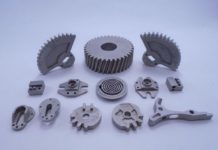In recent times there is much talk about new technologies, innovative technical solutions, market trends, efficiency and efficacy of devices, possible proposals and new solutions.
In all this analysis activity, we sometimes notice some confusion, due to the lack of clarity in the meaning of some terms, which are used in inadequate manner, thus generating uncertainty and possible misleading choices.
To identify the best technical solutions it is necessary to make rigorous comparisons, among different technologies and devices, without prejudicially neglecting any possible solution.
A question mark that we often hear expressed concerns an alternative between pneumatic and mechatronic solutions, to be used in automated machines.
If we speak of pneumatics, the reference to the technology is properly clear. If we speak of mechatronics, we refer to a term whose meaning is excessively wide and too often ambiguous.
Definitions are often contradictory. According to Wikipedia, mechatronics “is the branch of the automation engineering that studies the way for making three disciplines interact: mechanics, electronics and computer science, in order to automate production systems while simplifying human work. Mechatronics springs from the need of creating know-how in the ambit of the modelling, simulation and prototyping of control systems…” .
According to the Hoepli dictionary, mechatronics is the “discipline that works at the applications of electronics to mechanical machining”. If we follow other lines of thought, mechatronics is directly linked with automated design and production techniques, and then with CAD-CAM systems.
Actually, the mechatronics concept is based on the concept of integration of different technologies:
mechanics, electronics, electro-technique, controls and still others. Besides, the application field is not certainly limited to capital goods; complex rehabilitation equipment or a robot for non-industrial applications are certainly mechatronic systems.
Concerning this, a modern pneumatic system, with its sensors, solenoid valves and PLC is a mechatronic system in every respect.
The comparison to be made, then, among alternative technological solutions on automated machines is not between pneumatics and mechatronics but between pneumatic and electromechanical drives, which must be analysed with their peculiar performances and characteristics. As always, they are two technologies in competition, each of them tending to express the best and drawing the boost for a continuous progress from competition.
The comparison is, therefore, a cost-performance comparison. If we observe what happens in the field of the handling between two points or of the piece clamping, we see that pneumatics offers technically valid solutions at certainly lower installation costs and at generally higher operation costs than electromechanical solutions. The energy cost plays an outstanding role under these conditions. In conformity with the energy-efficiency policies of industrial systems, pursued by the European Union, it is necessary to make a correct choice of the cylinder sizes, to use an efficient distribution net without losses and with low pressure drops, to use highly efficient compressors and, possibly, to couple energy recovery techniques. Pneumatics has still a role to play and a good overall system vision will share in making the choice fall on its side.




